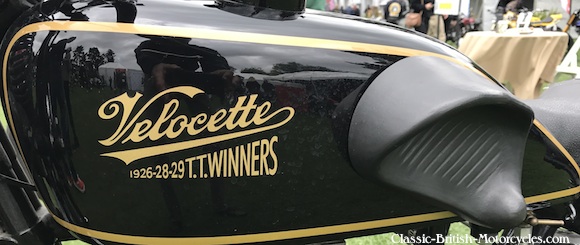1929 Velocette KTT Background
The 1929 Velocette KTT was the first year of the KTT line that would run until 1949. Based on Velocette’s very successful 350 KSS, which won the Isle of Man TT in 1926 (10 minutes ahead of the next bike), the KTT was a very advanced machine. It went on to become one of the most successful road race motorcycles of its time, racking up many international titles in its long career. The entire “K-series” were designed for racing, although Velocette wasted no time in cashing in on their racing success by building popular street bikes. All K-series Velocettes had a single-overhead camshaft (SOHC) driven by a vertical shaft with elaborate bevel gears on each end. When set up right, it was a brilliant and effective system, but they were extremely laborious to put together on the assembly line and required the experienced hands of a craftsman. Not the kind of thing you want in high-volume motorcycle production. This 1929-model represents the first of a very long, and worthy line of KTTs that ran until 1949. A very long run indeed.
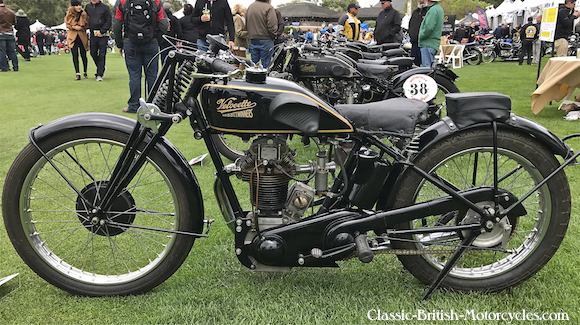
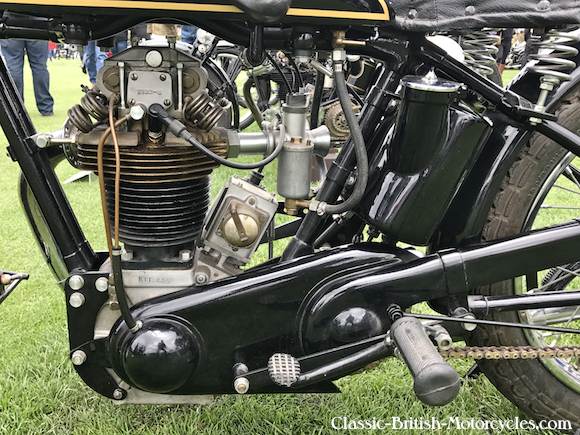
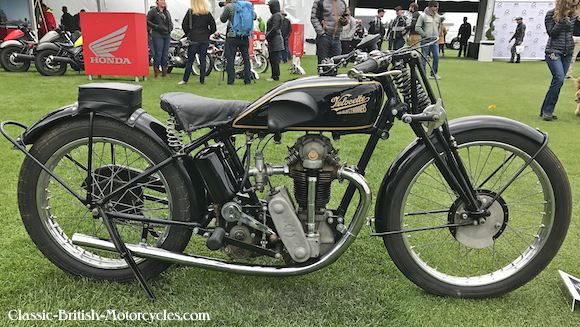
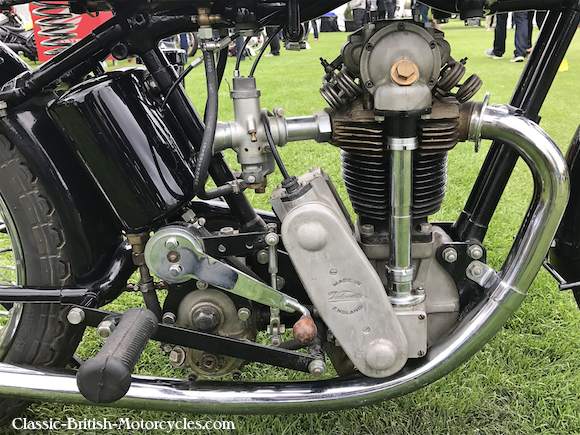
1929 Velocette KTT Engine
The KTT has earned many distinctions, not the least of which being the first motorcycle ever to employ a positive-stop sequential foot-shifted gearbox. We don’t even think about it today, but that ‘one-down, four-up’ move you’ve done a million times didn’t exist prior to this bike. Above, you can see that long housing rising up and back from the crankshaft, that’s covering the chain that drives the Lucas magneto. It’s also a great shot of the shaft-drive for the OHC. Notice the exposed ‘hairpin’ valve springs. These engines pushed the bounds of engineering and metallurgy at the time, and they were incredibly complicated to manufacture with the tooling they had at the time. Highly-skilled master mechanics were required for the final assembly of the bevel-drives. While great to brag about at the time, it drove production costs up so high that by the 1930s, Velocette was looking for a cheaper way to build engines. The obvious move was to a cam-in-crankcase (OHV) setup with pushrods and rocker arms. These of course became the M-series of Velocette singles, and they proved very successful and profitable for Velocette. The “K” in the K-series bikes, like this KTT stood for Kam, which is the German word for ‘cam’, in other words, overhead cam.
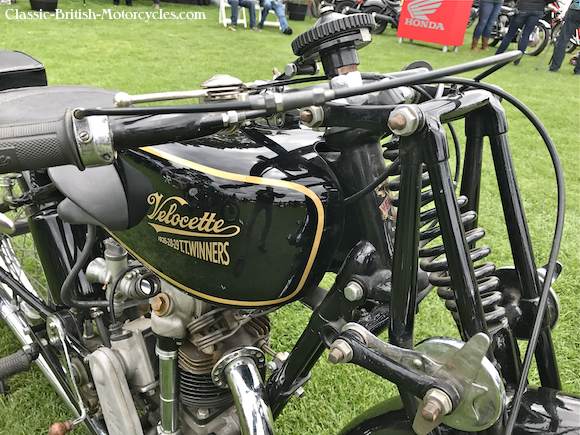
1929 Velocette KTT SPECIFICATIONS
|
Engine type Displacement Compression ratio Fuel system Ignition system Primary drive Clutch Gearbox Final drive Suspension, front Suspension, rear Brake, front Brake, rear Weight Top speed |
Air-cooled, SOHC single 350cc 7.5:1 (9.0:1 optional) Amal carburetor Lucas magneto Chain Multi-plate, dry 3-speed, right-foot shift Chain Webb girder fork w/friction dampers Rigid SLS drum SLS drum 265 lbs 85 mph |


